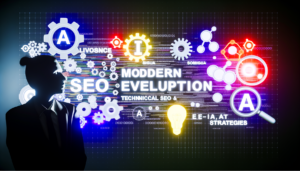The Role of User Intent in Modern SEO Strategies
Search engine optimization has evolved far beyond keyword stuffing and backlink accumulation. Today, understanding user intent—the underlying purpose behind a search query—is the cornerstone of effective SEO. As search engines grow smarter, they prioritize delivering results that align with what users genuinely seek, whether it’s information, a product, or a local service. Ignoring user intent risks creating content that ranks well but fails to engage or convert. This article explores how to decode user intent, align content strategies with audience needs, leverage technical SEO to enhance relevance, and measure success in a user-centric landscape. By focusing on intent, businesses can future-proof their SEO efforts and build meaningful connections with their audience.
Decoding User Intent: Beyond Keywords
User intent falls into four primary categories: informational (seeking knowledge), navigational (finding a specific site), transactional (ready to purchase), and commercial investigation (comparing options). Modern SEO requires analyzing search queries to identify which intent drives them. For example, a query like “best running shoes 2024” signals commercial investigation, while “how to fix a flat tire” is purely informational. Tools like Google’s “People Also Ask” and SERP feature analysis reveal intent patterns. By mapping content to these categories, businesses ensure their pages answer the right questions, satisfy user needs, and earn higher rankings.
Aligning Content with Intent-Driven Goals
Once intent is understood, content must be tailored to match. A transactional query like “buy organic coffee beans online” demands product pages with clear CTAs, while informational queries like “what is cold brew” thrive on detailed guides. Structuring content with hierarchical headings, FAQs, and multimedia enhances readability and signals relevance to search engines. For commercial-intent keywords, incorporating comparison charts or testimonials can tip the scales toward conversion. Crucially, content should anticipate follow-up queries—known as intent stacking—to keep users engaged and reduce bounce rates.
Technical SEO: Building Bridges Between Intent and Experience
Even the most intent-aligned content won’t succeed without technical optimization. Factors like page speed, mobile responsiveness, and structured data impact how search engines interpret and rank pages. For instance, slow-loading product pages frustrate transactional users, while poor mobile design derails local searches. Schema markup helps clarify content types (e.g., articles vs. product pages), improving visibility in rich snippets. Internal linking also plays a role: connecting blog posts to service pages guides users from informational to transactional intent, mimicking their natural journey.
Measuring Success in an Intent-First World
Traditional metrics like rankings and traffic matter less if they don’t correlate with intent fulfillment. Focus on:
- Click-through rates (CTR): High CTRs suggest titles and meta descriptions resonate with intent.
- Dwell time: Longer engagement indicates content satisfies user needs.
- Conversion paths: Track how users move from informational to transactional pages.
Tools like Google Analytics 4 and Search Console’s query reports provide intent-specific insights. Regularly updating content based on these metrics ensures alignment with evolving user behavior.
Conclusion: Intent as the North Star of SEO
User intent isn’t a trend—it’s the foundation of sustainable SEO. By prioritizing intent, businesses create content that ranks, resonates, and drives action. Start by categorizing queries, then craft content that addresses each intent stage. Support this with technical optimizations that enhance user experience, and measure success through intent-focused metrics. As search algorithms grow more sophisticated, the gap between keyword-centric and intent-driven strategies will widen. Those who adapt now will dominate SERPs, build trust, and turn casual visitors into loyal customers. The future of SEO isn’t about chasing algorithms; it’s about understanding people.


